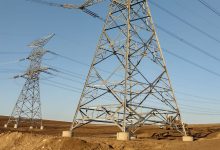Massive Chinese investments to change the world economic order: Romania received only promises from Beijing so far
China’s commercial empire is stepping up in Europe. Last year, the Chinese direct investments abroad (OFDI) have exceeded USD 200 billion and most of them had Europe as target. According to a survey by Rhodium Group and by Mercator Institute for China Studies, Beijing’s direct investments in the European Union is estimated to have risen by 76% last year to EUR 35.1 billion (USD 36.9 billion).
The willingness of the Chinese to continue investing in Europe is also confirmed by the setting up of a EUR 10 billion (USD 11.15 billion) investment fund to finance projects in Central and Eastern Europe in November last year. The China-CEE Fund is headed by Sino-CEE Financial Holdings Ltd, a company established by the Industrial and Commercial Bank of China (ICBC). The fund intends to get EUR 50 billion to finance infrastructure projects, high-tech products and consumer goods. Although the fund focuses on CEE countries, investments could be extended to the rest of Europe and to other regions if this is important for China’s cooperation with Central and Eastern Europe, reads a press release from Industrial and Commercial Bank of China issued at the time the fund was set up.
The Silk Road takes shape
In the Chinese government’s view, Central and Eastern Europe is part of the ‘Silk Road’ project, a project declared by Beijing as strategic, which aims to develop a trade route, for its implementation policies are to be adopted to stimulate Chinese lenders to finance infrastructure projects in the countries on the route from Europe to China. A network of highways, railways, natural gas and oil pipelines, internet networks, maritime connections will be built between the centre, west and south Asia, up to Greece, Russia and Oman, expanding China’s connection with Europe and Africa.
The official opening of the Silk Road took place early this year when a container cargo left the Chinese port of Ningbo for Piraeus, from there being transported to Budapest by two trains that reached the destination on January 29 and February 5.
The balance sheet of Sino-Romanian cooperation
Despite the insistence and efforts made by the Romanian governments in recent years, Chinese investments in our country are extremely low. Major energy projects, such as the construction of Group 3 and 4 at the Cernavoda Nuclear Power Plant, the construction of a new 600 MW power plant at the Rovinari Thermal Power Plant in the Oltenia Energy Complex or the construction of the Tarniţa-Lapustesti hydro power plant, the construction of a high-speed rail on the Bucharest-Iasi route have not yet overcome the negotiation phase or have been left in the drawers. China is Romania’s main trading partner in Asia, but it is only on the 19th place among foreign investors in our country, with investments value of about USD 440 million.
The largest Chinese investment on the Romanian market yet is expected on the Kazakh route. China Energy Company Ltd. (CEFC), which will take over 51% of the KazMunayGas International shares, has announced its intention to provide USD 3 billion to improve KMGI’s operations, the former Rompetrol Group, and for new acquisitions. The announcement was made in July this year by Du Liefen, CEFC’s Board Director, at a meeting with Romanian journalists on the occasion of Expo Astana 2017. The amount would be made available after the establishment of a business plan for a five-year period.
“The CEFC has promised that, when the five-year business plan is agreed, then the CEFC will provide USD 3 billion funding in five to ten years. These resources and capital will support KMGI to become an energy and investment platform over the next five to ten years. This capital will not only be used to improve the existing assets but also to acquire new assets for streamlining the business,” Du Liefen said.
The CEFC official also said that this cooperation between the Chinese company and KazMunayGas International can ‘complement’ the strengths of each other and can contribute not only to Romania’s economic value, but it can also bring employment opportunities, however he stressed that he expects from the Romanian Government a stable political and economic environment.
“CEFC intends to make full use of its advantages, resources, mechanisms and brand to turn the One Belt One Road Initiative into a well-organized and integrated energy chain. If we receive the approval of the Romanian governmental authorities (in the meantime it has been granted – our note) then we will own 51% of the KMGI shares of the refineries, of the 1,000 power stations in the neighbouring countries and of the logistics system which could lead to the increase of CEFC chain’s value,” Du Liefen said.
The KazMunayGas Kazakhstan and CEFC’s intentions aim to increase the refining capacity to 10 million tons of crude oil per year in Petromidia, up from 5 million tons today, the construction of 200 gas stations, as well as a cogeneration plant at the Navodari platform. KazMunayGas Kazakhstan (KMG NC) and CEFC signed an agreement in Bucharest in December 2016, confirming the commitment by the Chinese company to acquire 51% of the KMGI shares. The deal is expected to be completed this year, after receiving all the needed approvals. On September 20, 2009 China’s Sovereign Investment Fund announced that it has paid USD 949 million for 11% stake in KazMunayGas Exploration Production, a subsidiary of Kazahstan’s main state-owned company.
The KazMunayGas International Group is operating in 11 countries and owns the Petromidia Navodari refineries (the largest unit in Romania) and Vega Ploiesti (the oldest refinery in operation), as well as the Rompetrol distribution networks in Romania, Bulgaria, Republic of Moldova, Georgia, France and Spain. CEFC is a private business conglomerate in the fields of energy and finance. CEFC holds two groups and seven investment companies, a top company listed on the Chinese stock exchange, as well as shares in many international listed companies. The group has around 30,000 employees in 23 countries worldwide and in 2016 has registered operational revenues of EUR 38.9 billion.
Another entrance gate
Another noteworthy entry of Chinese capital in Romania took place at the beginning of last year with the acquisition of 30% of Zeta Petroleum by Golden Meditech Holdings Limited. The acquisition took place through an investment fund belonging to the latter.
Zeta Petroleum had an oil block in Jimbolia, where the Chinese have become partners with Russia’s Gazprom. In August 2012, Zeta Petroleum had ceded 51% of the rights on Jimbolia block to NIS Gazprom Neft, which now provides funding for the exploration work. Earlier last year, GM Investment & Co Limited, subsidiary of Golden Meditech Holdings Limited, approved the acquisition from Zeta Petroleum of Zeta Romania Group’s entire share capital, which holds shares in three oil blocks (Bobocu, Suceava and Jimbolia). These shares are due to be ceded to GMI, Zeta Petroleum’s main shareholder, in exchange for deleting GBP 1.9 million debts.
Protocols and academic agreements
Recently, a delegation from the Petroleum-Gas University (UPG) in Ploiesti paid a working visit to China in order to establish collaboration protocols between UPG and prestigious similar institutions in the host country. Thus, on June 15, Romanian representatives were welcomed at the Northeast Petroleum University in Daqing (NPU) by the Chinese delegation headed by Jiang Mihnhu, the university’s president.
After short presentations of the two universities, the possibilities of future collaboration between the two higher education institutions were considered. At the end of the meeting, a General Protocol was signed between UPG Ploiesti and NPC Daqing. It was also agreed to conclude an agreement within the Erasmus+ programme to exchange students and academic teachers between the two universities, however it is necessary to identify the study programmes that are compatible from the curricula viewpoint.
On June 20, the Romanian delegation visited China University of Petroleum-Beijing (CUPB), where the content of a General Protocol between the two universities was discussed. At the same time, it was agreed, upon the UPG proposal, to conclude an Erasmus+ agreement for exchange of students and teachers. The host university representatives were delighted by the idea, also proposing a student mobility programme funded by the Chinese government.
16+1 cooperation
In 2012, the so-called 16+1 economic cooperation format was set up between the Central and Eastern European countries and China. The 16+1 format refers to various mechanisms and collaborations between China and 16 Central and Eastern European countries, representing a way to strengthen their economic relations. Since its inauguration, the 16+1 cooperation format has been widely accepted in Central and Eastern European countries and has witnessed rapid developments. Lately, summits between China and the Central and Eastern European countries (CEE) have been held regularly, based on the already existing or on undergoing assessment cooperation mechanisms. The China-CEE summit, including meetings of the China-CEE leaders at the level of Prime Ministers, is held annually, along with the China-CEE Economic and Trade Forum. Thus, progress has been made in institutionalizing cooperation mechanisms in various fields, usually taking the form of an association, forum or collaboration opportunity that facilitates contacts between China and CEE.
In 2015, Romania set up the China-CEE Centre for Dialogue and Cooperation in Energy (CDCEP), this year is to be held in Bucharest the first major international event (under the auspices of the CDCEP) – the Exhibition Fair and the 16+1 Conference – dedicated to the energy industry of Central and Eastern Europe and China.
The Romanian Energy Centre (CRE) professional association was named at the Government meeting on September 21, 2016, through a Memorandum, as “pillar of the Centre for Dialogue and Cooperation in Energy (CDCEP) activity – the Romanian initiative within the 16+1 format of economic cooperation between Central and Eastern European countries and China.”
The CDCEP 16+1 activity aims to bring added value to the Romanian government’s energy diplomacy with China, with the European Union and the Energy Community, reconfirming the importance of Romania’s strategic position in the region.
As the coordinator of the CDCEP 16+1, the Romanian Energy Centre aims to promote the priority areas set out in the Memorandum by supporting clean and renewable energy investment projects in Central and Eastern Europe, by developing exploration and exploitation projects of gas and oil reserves, by refurbishment projects and introduction of clean technologies, by the development of national electricity transmission systems, nuclear and advanced technology projects and, last but not least, by aligning the energy policy framework to the European Union’s priorities and policies.






